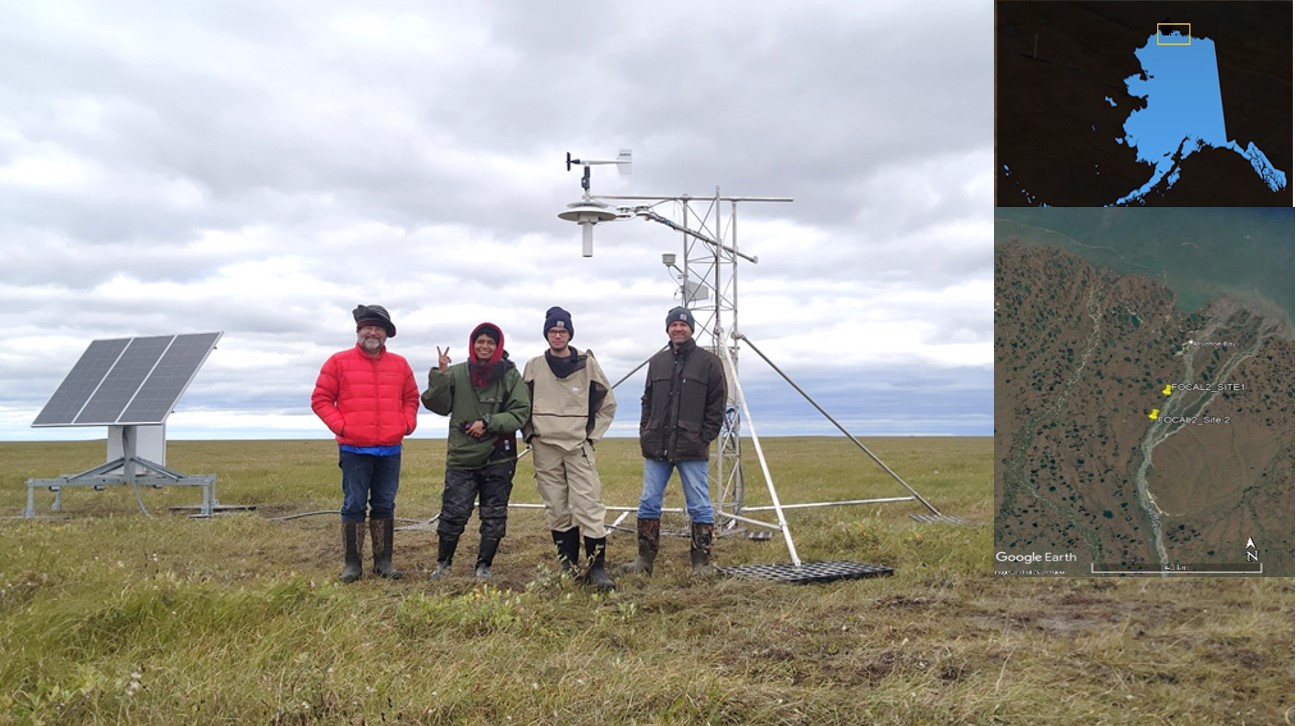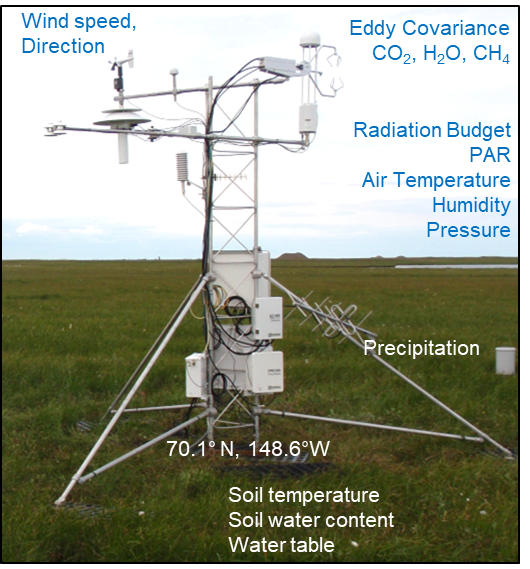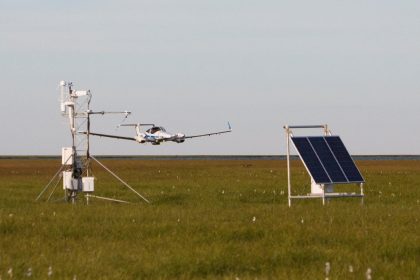Flux Observations of Carbon from Airborne Laboratory (FOCAL)
Multi-Regional Scale Aircraft Observations of Methane and Carbon Dioxide Isotopic Fluxes in the Arctic
In recent decades, warming in the Arctic region has been much faster than the rest of the globe. Northern latitudes are warming at twice the global mean, making carbon stored in permafrost increasingly vulnerable to thaw and decomposition by microbes, potentially leading to large increases in methane (CH4) and carbon dioxide (CO2) emissions, both important greenhouse gases. Known as arctic amplification, this phenomenon has been observed by instruments, climate models and in paleoclimate records.
Accurate forecasts of greenhouse gas emissions are critical inputs to global models that predict changes to temperature and to sea level. Our regional and global scale climate models require a better understanding of methane and carbon dioxide sources to gain insight into how the change will vary in a warming Arctic.

The ATDD team, left to right: Tom Wood, Praveena Krishnan, Dominick Christensen, and Mark Heuer after the successful installation of the FOCAL site 2. Inset shows locations of the sites.
On a local level, FOCAL data and modeling products can be used to better inform local populations as their environment changes as well as help predict likely changes in the future. Improvements to regional and global scale models require advancement in the current knowledge of methane and carbon dioxide flux sources to gain insight into how the net flux is expected to respond to a warming Arctic.
The complex terrain of the North Slope offers a wide range of Greenhouse Gas emission sources, such as wetlands or thawing permafrost. But scientists have a knowledge gap between ground based studies and large-scale regional estimates from remote sensing data or inversion-model results. FOCAL will fill in missing data on the sources of emissions by providing more insight into ground based measurements and their scalability over the ecosystem. Observations of various molecules reveal clues about the greenhouse source processes at local, landscape, and regional scale, a feature unique to this project.
Limited infrastructure for ground-based equipment means that a small aircraft is the best option for large scale measurements. Airborne measurements, especially from low-flying aircraft, can correlate the emissions with the larger landscape. For FOCAL, flux measurements from low-flying aircraft are coordinated with surface measurements, enabling detailed tower surface-flux measurements to be used over a larger regional scale by mapping the correspondence to the flux in larger areas. Comparing aircraft derived fluxes to local tower measurements and land classification maps allows for the determination of which landforms or mechanisms contribute to the variations in emissions. Data, models, and analysis directly measuring the fluxes over regional scales close to the surface and measuring fluxes using inverse modeling helps to better understand the differences.
FOCAL data will also help to evaluate which areas and conditions are best suited for predicting methane and carbon dioxide emissions in order to produce accurate estimates from remotely sensed variables. The ability to define the current late summer and autumn net flux of methane and carbon dioxide from the North Slope and adjoining Arctic waters is required to establish a benchmark for quantitatively tracking the annual time series of net carbon flux from the Arctic.

Components and instruments on the FOCAL tower.

The Diamond DA-42 aircraft with the FOCAL system flying past an instrumented tower to obtain enhanced measurements around the landscape surrounding the tower in August 2013.

